1642: Nieuw Amsterdam's first tavern, the City Tavern, opens on Pearl Street, right by the waterfront, in today's Downtown Manhattan.
It was in a prominent location, next to the first paved street, Stone Street, which led to the Mill on Mill Street the most important part of town where the transition of Nieuw Amsterdam to New-York City was agreed on.
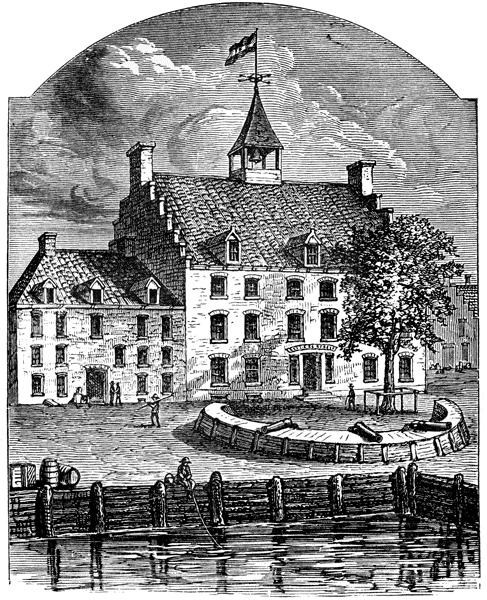
The colony's Governor William Kieft built the tavern because he was tired of entertaining visitors (freeloaders?) at his home and wanted an inn to send them to and make them pay him instead. It was by far the best building in town.
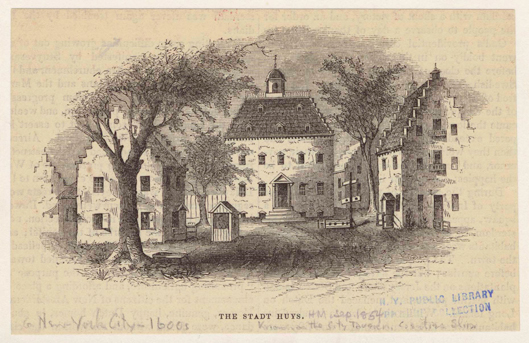
Taverns become quite popular and are believed to compose 1/3 of the businesses in the colony, and they were the best buildings in town where business, gambling, politics, and more happened.
Eleven years later, a subsequent Dutch Governor of Nieuw Amsterdam, Peter Stuyvesant, establishes the municipal government and the capitol of Nieuw Nederland in this tavern, renamed Stadt Huys (State House or City Hall) in 1653. It was remodeled to host meeting space for the mayors and the city council, and a more prominent entrance and cupola was emplaced.
Stadt Huys was City Hall until 1697 when it moved next door at the Lovelace Tavern—a tavern named for the 2nd
English governor of New York from twenty years before, Francis Lovelace. Two years later the City Hall moved to Wall Street where Federal Hall is. That was the year that the wall was finally removed.
You can see the outlines of Stadt Huys and Governor Lovelace's Tavern in the Goldman Sachs plaza across from the Fraunces Tavern Historic District. The Stadt Huys' outlines are in yellow brick, like old Dutch buildings had. The grey line indicates how close the Lovelace Tavern was right next door.
As prominent as this tavern and city hall was, you could barely park three vans in it if it were a garage! Nieuw Amsterdam was a small, but important trading town.
In 1979 this was the site of New York City's first excavation which revealed that there is a lot of archeology not too far down.
That being the case, perhaps it should not have been such a surprise in the early 1990s when the African Burial Ground's coffins were unearthed when they were developing a parking lot in the Municipal District.
More about the Stadt Huys from this presentation to the NY Historical Society. Use the arrow on the lower right to advance the page.
1859: Billy the Kid born in NYC.
Sometimes he'd stay at the Paris Cafe, which we enjoy on my official South Street Seaport tour.
1869: The Metropolitan Museum of Art is founded by artists, government officials, cultural leaders, and patrons of the arts found so that New York City wouldn't just be a place for crass money-making, but an emerging cultural capitol like Paris or London. This was the beginning of the post-Civil War wealth of the Gilded Age.
1887: Horror actor Boris Karloff born in England. He lived in the Dakota but not die there in 1969.
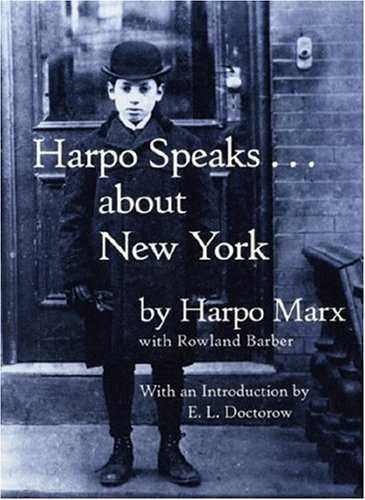
1888: Harpo Marx born in Yorkville, NYC.
1903: Enrico Caruso, the great Italian Tenor, premiers at the Metropolitan Opera, performing Rigoletto to great acclaim.
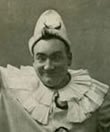
Caruso around 1911, clowning around. Actually, he was starring in Pagliacci. Rigoletto was his other signature role.
The acclaimed Caruso was one of the (then new) Ansonia's famous residents. We enjoy the Ansonia on Upper West Side tours.
1906: Enrico Caruso fined $10 for molesting a woman in the Central Park Zoo's Monkey House, but the public doesn't buy it.
It was ruled that Caruso's right elbow brushed against the woman's right forearm. The "victim" did not even testify to support her allegation, which Caruso denied.
Early 20th Century Upper Class morays remind me of the Taliban, or some Orthodox Jews, with women in public being separate from men, and dressed almost completely covered up. Except the women from 1906 dressed beautifully.
I speculate that there was anti-Italian bias against this immigrant darling of the upper class.
Crowds of well-wishers shout "Viva Caruso" on the steps of the Courthouse and at the Metropolitan Opera.
1923: Billy Haughton the harness racing driver born. He died in 1986.
1930: Football player Hap Moran runs 91 yards (nearly the entire field), setting a NY Giants record at the Polo Grounds, enabling the Giants to prevail over the Packers 13-6.
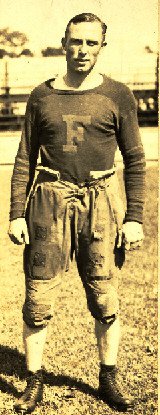
1936: Life Magazine opens.
1947: 70,060 fans at Yankee Stadium set attendance record, witnessing the (AACF Football) Yankees tie the Cleveland Browns 28-28.
1950: NYS Senior Senator Chuck Schumer's birthday. He is, of course, is a member of the Banking Committee, since Wall Street is in his state.
1954: Twenty-five years after the Black Tuesday 1929 crash, the Dow Jones industrial average finally surpassed it's pre-crash high, closing at just over 382.
1959: Fiorello! the musical biography based on New York City's great Depression-era Mayor & reformer debuts on Broadway, starring Tom Bosley, at the Broadhurst Theater.
Fiorello LaGuardia is beloved by octogenarians, who included my father, for reading the funnies (comics pages) over the radio during a newspaper strike. In that era, radio was the only live broadcast medium.
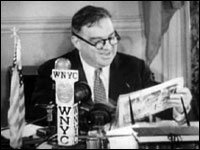
LaGuardia and his friend, President Franklin Roosevelt, were masters of using radio.
LaGuardia is not just NYC's first Italian Mayor. He was
NYC's first Jewish Mayor.
1971: The Peoples' Republic of China is first seated at the United Nations.
1979: Willie Classon's knockout during Madison Square Garden boxing kills him five days later.
1876: Boss Tweed turned in.
2005: Rent, the movie about my neighborhood starring people from my neighborhood, opens.
More about today's history
http://learning.blogs.nytimes.com/on-this-day/november-23/
More and More about November 23rd